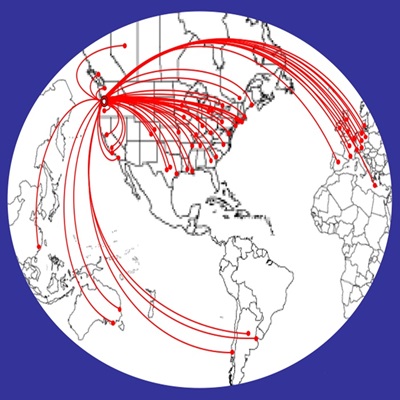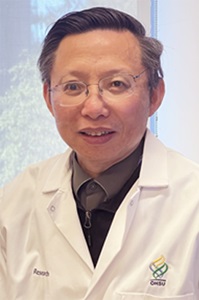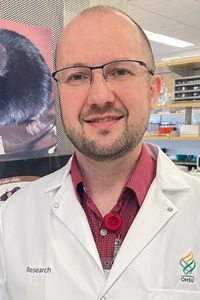About

by TMM for OHSU researchers.
About the Transgenic Mouse Models core
The TMM core has provided services to the research community since 1994. Genetically modified mice generated by the TMM core have been successfully used by investigators at OHSU, across the U.S. and internationally with over five hundred unique transgenic and knockout mouse lines produced. The Core currently provides technology and expertise in CRISPR genome editing. Maintaining pace with the exponential growth in transgenic technology, our staff regularly attend courses, workshops, and conferences at institutions such as Jackson Laboratories, International Society for Transgenic Technologies and The Western Association of Core Directors.
The TMM Core currently supports 143 internal PI's and 215 grants from NIH and other funding agencies.
Departments and institutions of OHSU supported by the TMM Core include:
- Anesthesiology & Perioperative Medicine
- Behavioral Neuroscience
- Cellular Development & Cancer Biology
- Molecular & Medical Genetics
- Otolaryngology
- Physiology & Pharmacology
- Oregon Stem Center
- Pape’ Pediatric Research Institute
- Vollum Institute
- Knight Cancer Institute
- Oregon Hearing Research Center
- Center for Research in Occupational & Environmental Toxicology
- Division of Pulmonary & Critical Care Medicine
External customers in Portland and across the U.S. include
- Veterans Affairs Medical Center
- Shriners Hospital for Children
- Legacy Research Institute
- SUNY Upstate Medical University
- Sanford Children's Health Research Center
- University of West Virginia School of Medicine.
Lab locations
TMM facilities are located on Marquam Hill in the Lamfrom Biomedical Research Building.
- 3rd Floor – Molecular biology component of the core
- Level B1 - ES tissue culture and embryo microinjection laboratories are in a Specific Pathogen Free barrier area.
- Level B1 - Animal housing rooms are adjacent to the Department of Comparative Medicine. This provides an exceptionally convenient location as it is a controlled sterile, environment that is easily maintained and facilitates transportation of newly generated mice.

Lab space of TMM Core. (A) Molecular laboratory. (B) Embryo microsurgery room. (C) ES Cell culture room. (D) SPF mouse room. Mice are housed within individually ventilated cages (IVC). (E) All animal manipulations are performed inside of Biosafety Cabinets under SPF conditions.
Personnel
Lev Fedorov
Lev Fedorov, earned his PhD in genetics in 1987 at Vavilov Institute of General Genetics of RAS , Moscow, Russia. After that Lev worked as the Group leader of Mouse developmental Genetics (1986-1993) at the Res. Centre for Med. Genetics of RAS, Moscow. There he continued the study hematopoiesis in chimeras and, moreover, his group established methods of generation of embryonic stem (ES) cells and ES chimeras. Later Lev continued his career in Germany as a guest scientist at the at the Max-Planck Institute in Freiburg (1993-1995), Research Group Leader, University of Würzburg (1995-2004). His research was focused on the Ras/Raf signaling and p53, p21CIP/WAF1 pathways and Bcl-2 oncogene in malignant transformation and in the regulation of different physiological processes.
In 2004-2008 he worked as Head of the Transgenic Animal Core at University of Jena where he combined his own study of the role of Rheb1 and BubR1 genes at embryonic and postnatal development and the supervision of the Transgenic Core.
After 15 years’ work in Germany, Lev moved to the USA. Since 2008, he has served as the Res Assist Professor, and Director of the Transgenic Core Lab (TMM) at OHSU. His scientific interests cover several topics: described above, but his main current duty is the modeling of human hereditary diseases using modern transgenic technology, particularly CRISPR gene editing. During this time more than 40 mouse mutant lines (with KO and KIN of genes) have been produced for OHSU and external researchers via CRISPR technology. Moreover, the TMM provides cryopreservation and long-term storage of mouse germplasm and other important services.

Yingming Wang
Yingming Wang earned his M.D. degree from Nanjing Medical University, China, in 1983, and subsequently held positions ranging from Assistant Lecturer to Associate Professor at the same institution from 1983 to 2001. In 2001, he joined OHSU as an Exchange Scholar and has since contributed 23 years to the institution, with 15 years dedicated to the Transgenic Core. He currently serves as a Senior Core Scientist at the Transgenic Core, OHSU. He excels in CRISPR injections, CRISPR electroporation, blastocyst injection, cryopreservation of embryos and sperm, rederivation of mouse lines, In Vitro Fertilization (IVF), reconstitution of frozen embryos, animal surgery and many other procedures.

Marten Davenport
Marten Davenport got his bachelors of science at Oregon State University in Biology in 2002. After working in animal care, he joined OHSU’s Department of Comparative Medicine in 2011. There he worked with a wide variety of animals helping with some of the surgery procedures. In 2020 he joined the Transgenic Mouse Models Core. There he has expanded his repertoire of procedures to include surgery on mice, cryopreservation of sperm and embryos, and microinjection into embryos amongst other procedures.
